Installation view of the Exhibition“Roppongi Crossing 2022: Coming & Going”
2022-2023
Mori Art Museum
AKI INOMATA
《彫刻のつくりかた》
2018-
展示風景:「六本木クロッシング2022展:往来オーライ!」森美術館(東京)
撮影:木奥惠三
画像提供:森美術館
https://www.mori.art.museum/en/exhibitions/roppongicrossing2022/
木とビーバー
ビーバーは、樹木を食べ、樹木でダムや巣を作り、伸びた歯を削る。私はこの生態に興味をもち、5つの動物園に依頼して、ビーバーの飼育エリアに木材を設置させてもらった。ビーバーが齧った後の木材を集めてみたところ、そのフォルムは美しく、人間のつくった彫刻のようにも見えた。人体のような形が少なからずあり、中にはブランクーシや円空の作品を彷彿とさせるものもあった。「それ」は彫刻なのだろうか。ある物体が彫刻とみなされる理由は、いったい何なのだろうか。
ビーバーが齧った後に残った木や削った痕跡は、あくまで「副産物」であるが、私はそこに人間のつくる彫刻作品を重ねて見てしまう。だがそれは、木の節などの堅い部分を避けて齧った結果だとも考えられる。もしそうであるなら、この木のフォルムをつくり出しているのは、むしろ木そのものであるとは言えないだろうか。もしくは、木とビーバーの関係から生み出された形と言っても良いだろう。その時、行為の主体=〈作者〉は何/誰であろうか。
Trees and beavers
Beavers turn to trees for food, to build dams, make nests, and trim their ever-growing teeth. Intrigued by the curious life of the beaver, I reached out to five zoos, who allowed me to leave fresh blocks of lumber in their beaver breeding area. When I retrieved the lumber at a later date, I found the beavers had gnawed the wood into beautiful forms that resembled sculptures created by human hands. Many evoked anthropomorphic figures. Some even echoed the work of Brâncuși (1876-1957) and the Buddhist monk Enkū (1632–1695).
The experiment raised many questions. For example, can we call these beaver carvings “sculpture?” And what constitutes sculpture, in the first place?
I can’t help but see an overlap between the creations of the beavers and human sculptors. Yet of course, the beaver carvings are merely the byproduct of biological instinct. Rather than artistic impetus, the beavers are ostensibly guided by a preference for soft wood, choosing the path of least resistance by eating around hard knots and burls. In this sense, perhaps we could say that the wood itself is the artist of its own design. Or rather, the resulting gnawed forms are a natural outgrowth of the relationship between the beavers and trees. Which begs the question: who/what is the subject — which is to say, artist — behind this constructive act?
作者の違い
同じ形状を別の主体が彫ったら、どんな違いが生まれるのだろうか。
それを検証するために、彫刻家に同じ形状— ビーバーに齧り残された形―を彫ってもらった。意図がうかがえない形を模刻することは容易ではないのだろう。ノミ痕から、彫刻家の戸惑いや、自分なりの解釈のようなものが伝わってくる。
人間の体重はビーバーのおよそ3倍であることから、原型を約3倍の大きさにして再現してもらった。
さらに機械(CNC切削機)によって、同じ形を彫ることにした。切削する軌道をコンピュータで事前に計算し、木の節の有無に関わらず、決められたルート通りに切削が進む。全ての箇所が均質に彫られている点は、ビーバーや人と異なる点だろう。形づくる意識や意図は見えづらく、彫刻の精神性のようなものが抜け落ちているようにも感じられる。
Authorship and the different artists
If you asked severalartists to replicate the same form, how would the results vary?
In order to investigate this query, I commissioned a sculptor to create human-scale models of the beaver carvings. As the average human weighs three times more than beavers, I asked the sculptor to make her models three times the size of the originals. It was surely not an easy task to replicate these seemingly arbitrary forms. In the sculptor’s chisel marks, we can detect traces of trepidation, as well as instances where the sculptor inevitably interjected her own human interpretation of the work.
I further replicated the same forms by mechanical means, employing automated CNC milling machines that steadily milled down the wood according to preprogrammed routes, undaunted by the knots and burls that affected the beavers and human sculptor. The sheer uniformity of the machine-made carvings obscured the biological sentience and intent behind the original forms, thereby shaving away the intangible spirituality of sculpture in the process.
隠れた作者
齧られた木を保有して1年以上が経ったある日、ビーバーが齧った木のかたわらに、小さな木屑の山を発見した。調べたところ、中にカミキリムシが棲んでいることが発覚した。CTスキャンによって、カミキリムシが数年がかりで掘り進めた複雑な坑道が明らかになった。
この経験は、作品だと思っていたものの中にも予期せぬ作者が存在していることを教えてくれた。カミキリムシが掘った穴は、外から観る彫刻とは逆の構造をもつ。それは、「陰の彫刻」と言えるのではないだろうか。
過去にも、この穴に美を見出した人々は存在した。例えば、木を虫が食べた跡を欄間の意匠として生かした「虫食い欄間」は各地に残されている。
Hidden artists
One day, I noticed that a small mound of sawdust had accumulated at the foot of a beaver carving after a year in storage. Upon closer inspection, I discovered longhorn beetles living in the wood. CT scans revealed a complex network of tunnels, bored by the beetles over many years. In a literal way, this revelation taught me that there is more to a work than meets the eye, as embodied by the presence of yet another, unexpected artist in the beetles. Perhaps we could even say their interior tunnel structure represents an inverse, shadowy foil to sculpture.
Our ancestors appreciated the beauty of the holey bug bite. Travel across Japan and in old homes you may still find mushikui-ranma—decorative wooden transom panels riddled with the vestigial holes wrought by hordes of these hidden artists.
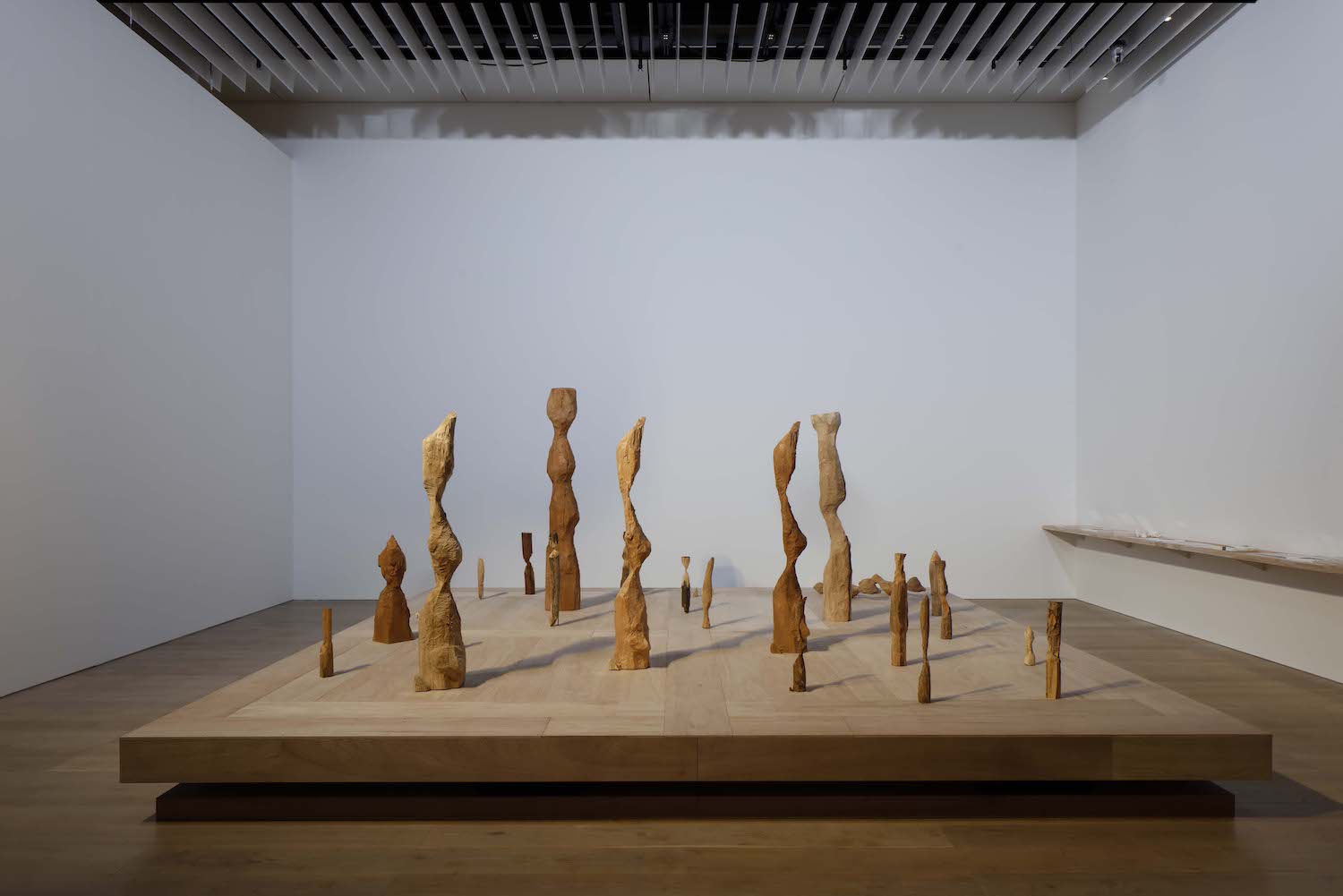 photo: Kioku Keizo, courtesy of Mori Art Museum
photo: Kioku Keizo, courtesy of Mori Art Museum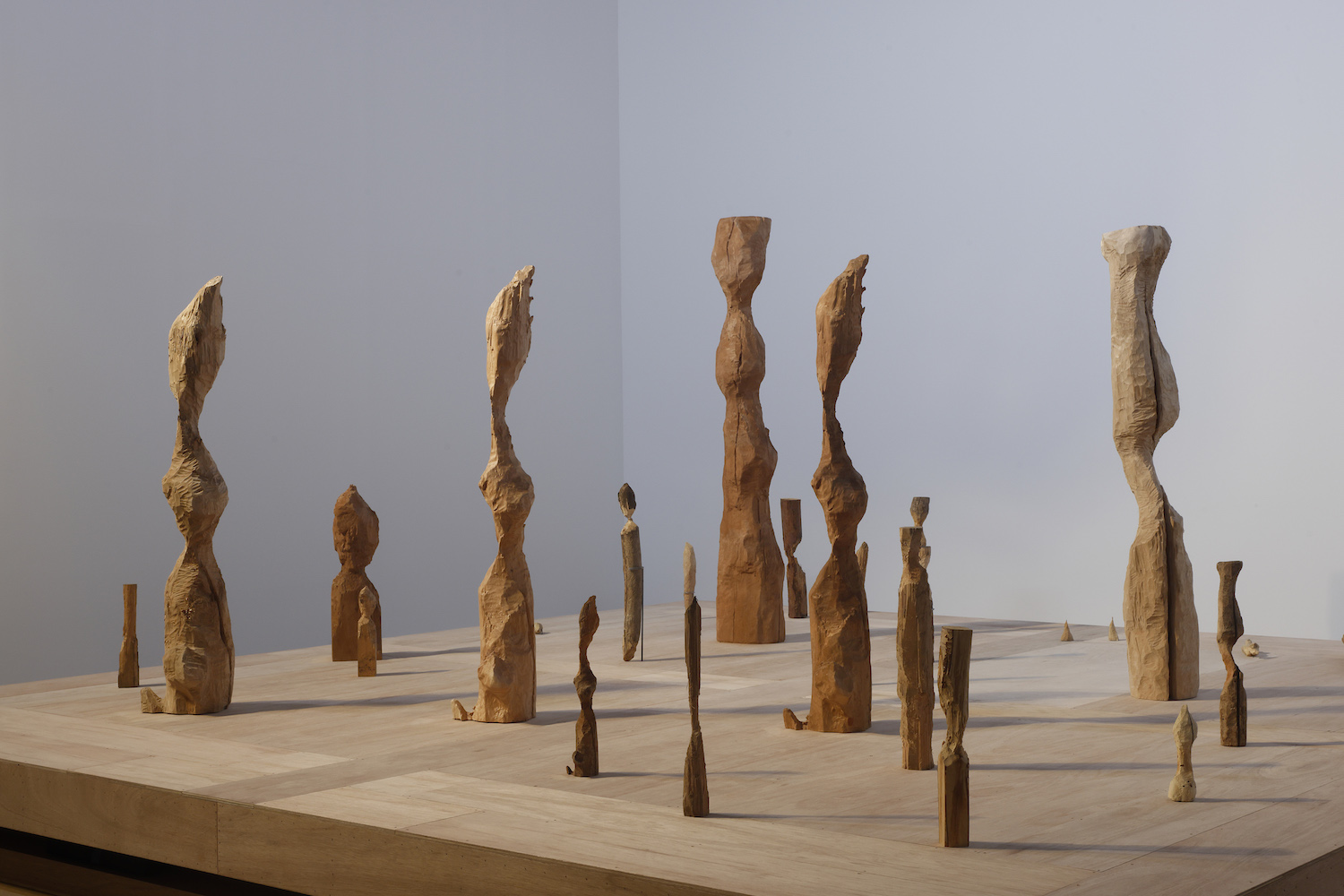 photo: Kioku Keizo, courtesy of Mori Art Museum
photo: Kioku Keizo, courtesy of Mori Art Museum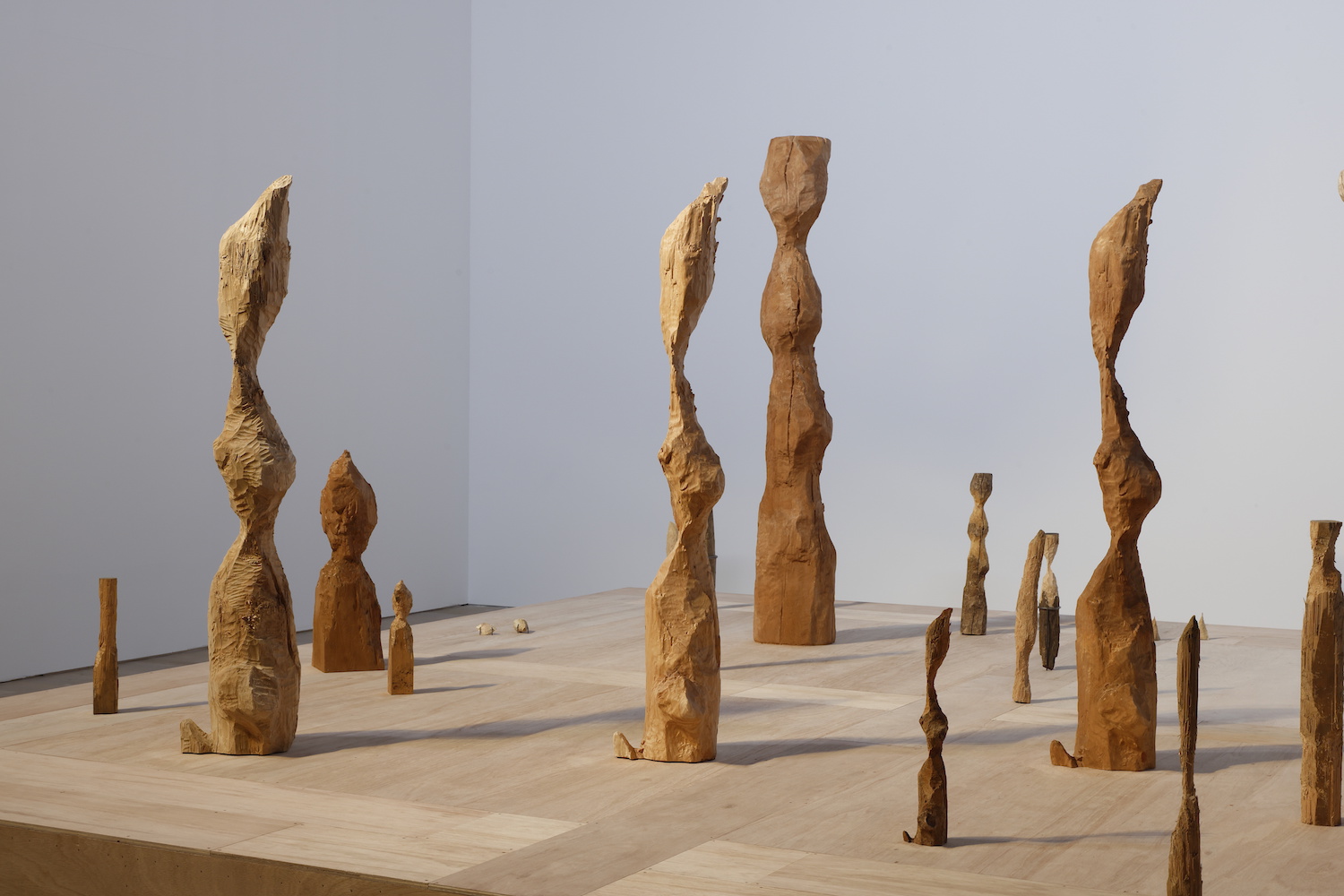 photo: Kioku Keizo, courtesy of Mori Art Museum
photo: Kioku Keizo, courtesy of Mori Art Museum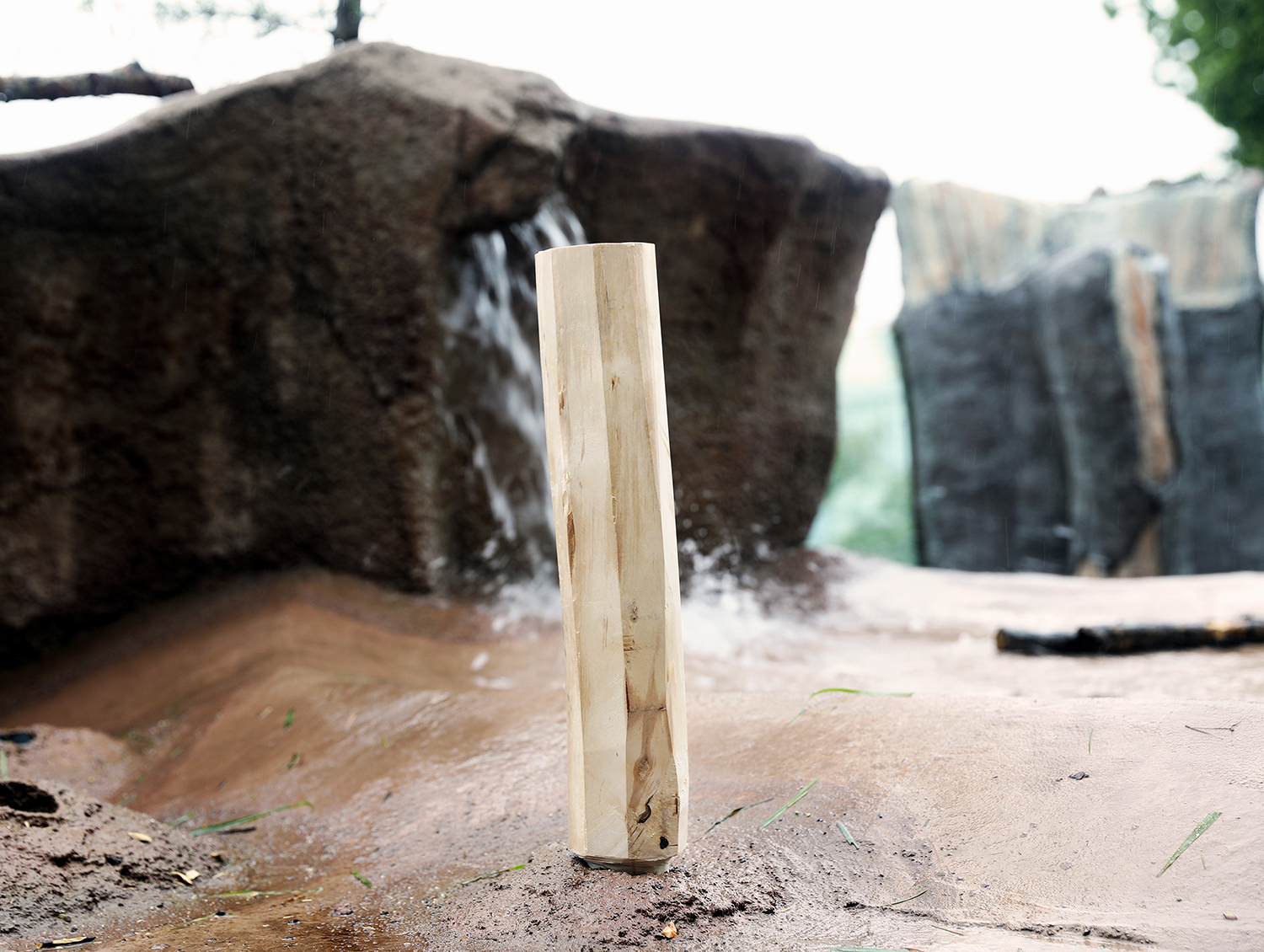 Trees set up in the beaver breeding area of the zoo. Production Support: Nasu Animal Kingdom
Trees set up in the beaver breeding area of the zoo. Production Support: Nasu Animal Kingdom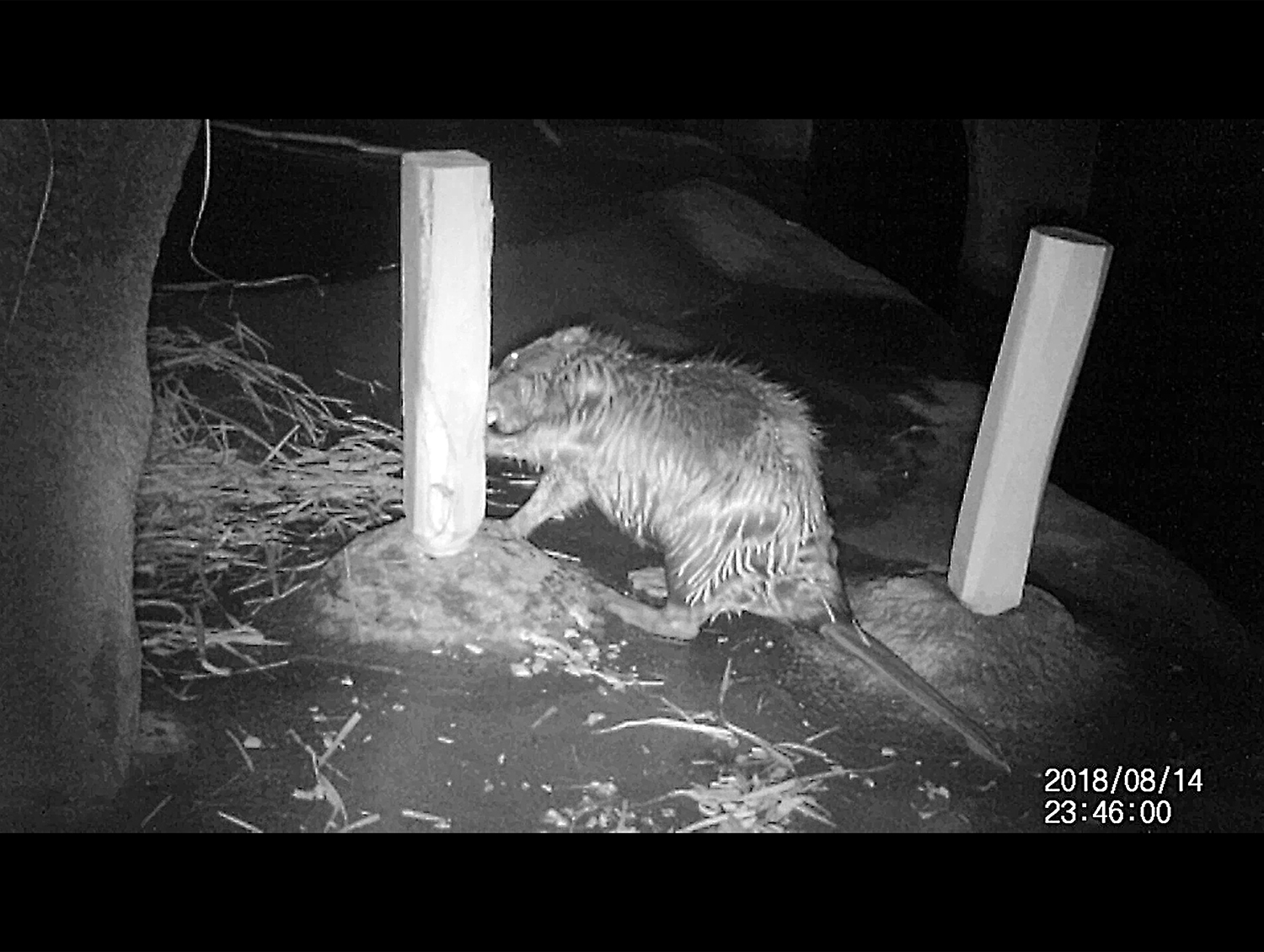 Beavers are nocturnal and gnaw on trees at night. Production Support: Nasu Animal Kingdom
Beavers are nocturnal and gnaw on trees at night. Production Support: Nasu Animal Kingdom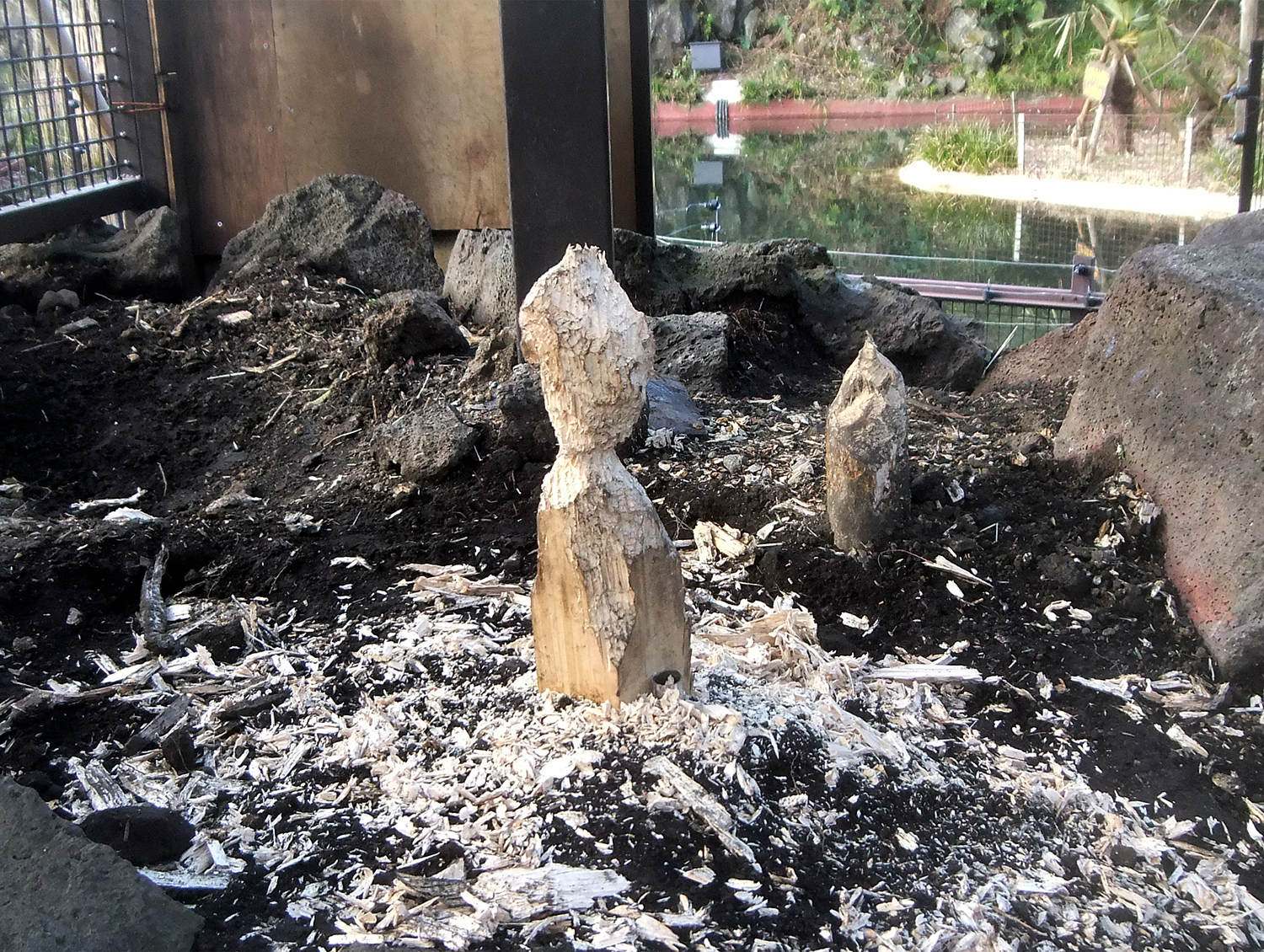 The breeding area on the next morning. Wood chips are scattered around the gnawed tree. Photo: Ito Naomi. Production Support: Izu Shaboten Zoo
The breeding area on the next morning. Wood chips are scattered around the gnawed tree. Photo: Ito Naomi. Production Support: Izu Shaboten Zoo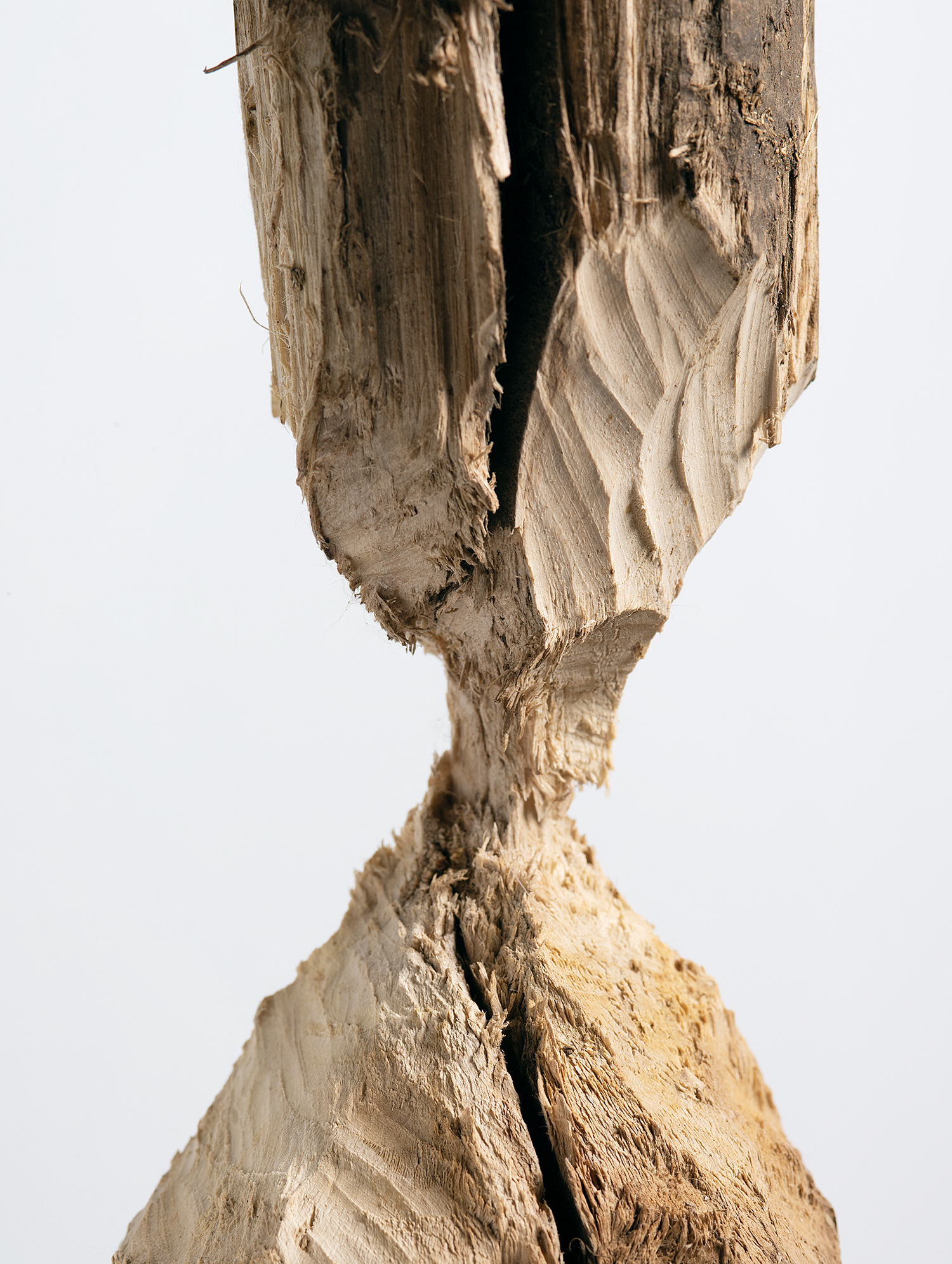 Beaver tooth marks can be observed on the gnawed tree.
Beaver tooth marks can be observed on the gnawed tree.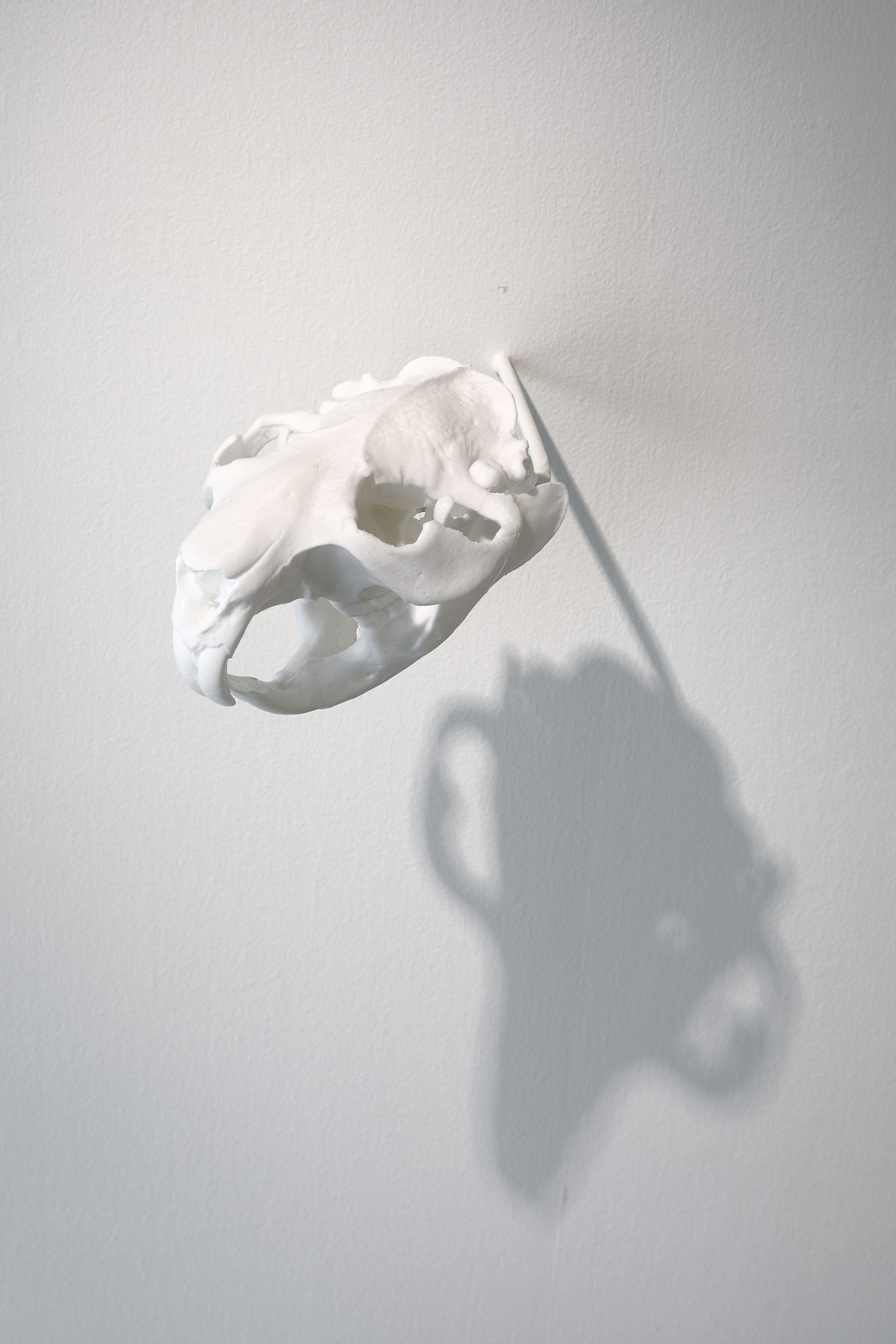 Replica of a beaver skull. Two long front teeth, one on top and one on bottom.
Courtesy: The Museum on the Street Association and Exedra
Replica of a beaver skull. Two long front teeth, one on top and one on bottom.
Courtesy: The Museum on the Street Association and Exedra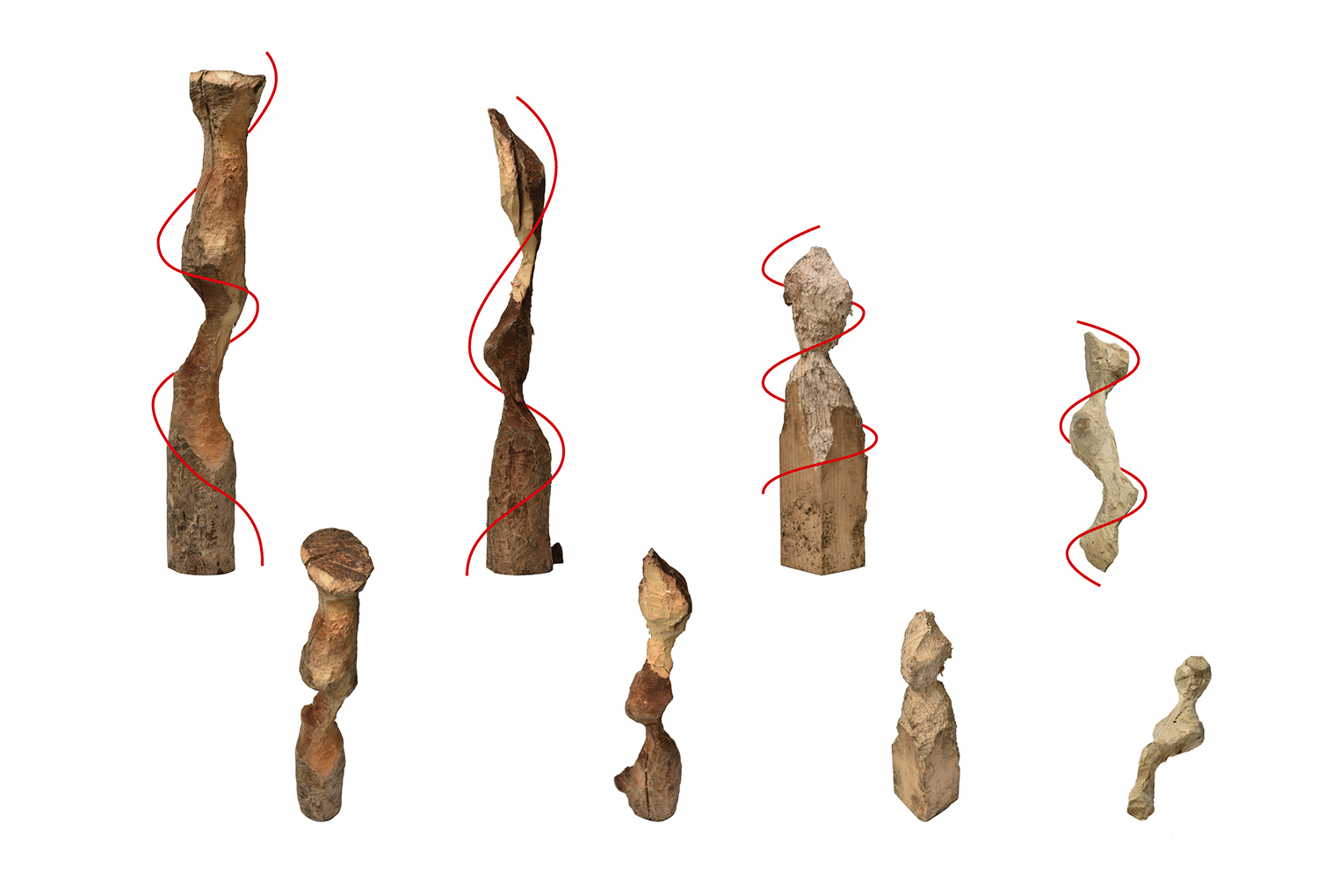 Trees gnawed by beavers show a spiral-like trend.
Trees gnawed by beavers show a spiral-like trend.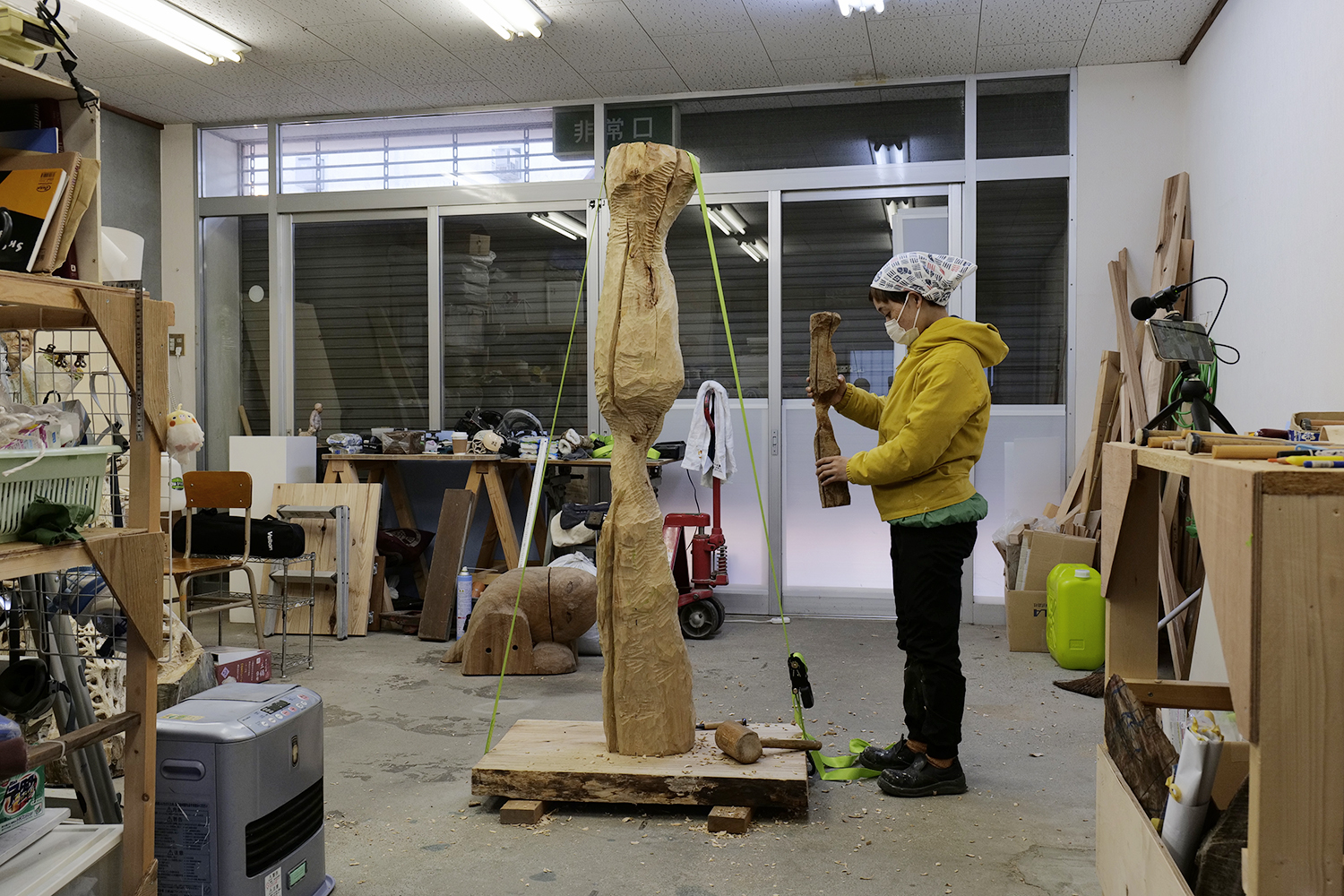 A scene in which a sculptor, Takeno Yumi, was commissioned to carve a replica of a tree that a beaver had gnawed on.
A scene in which a sculptor, Takeno Yumi, was commissioned to carve a replica of a tree that a beaver had gnawed on.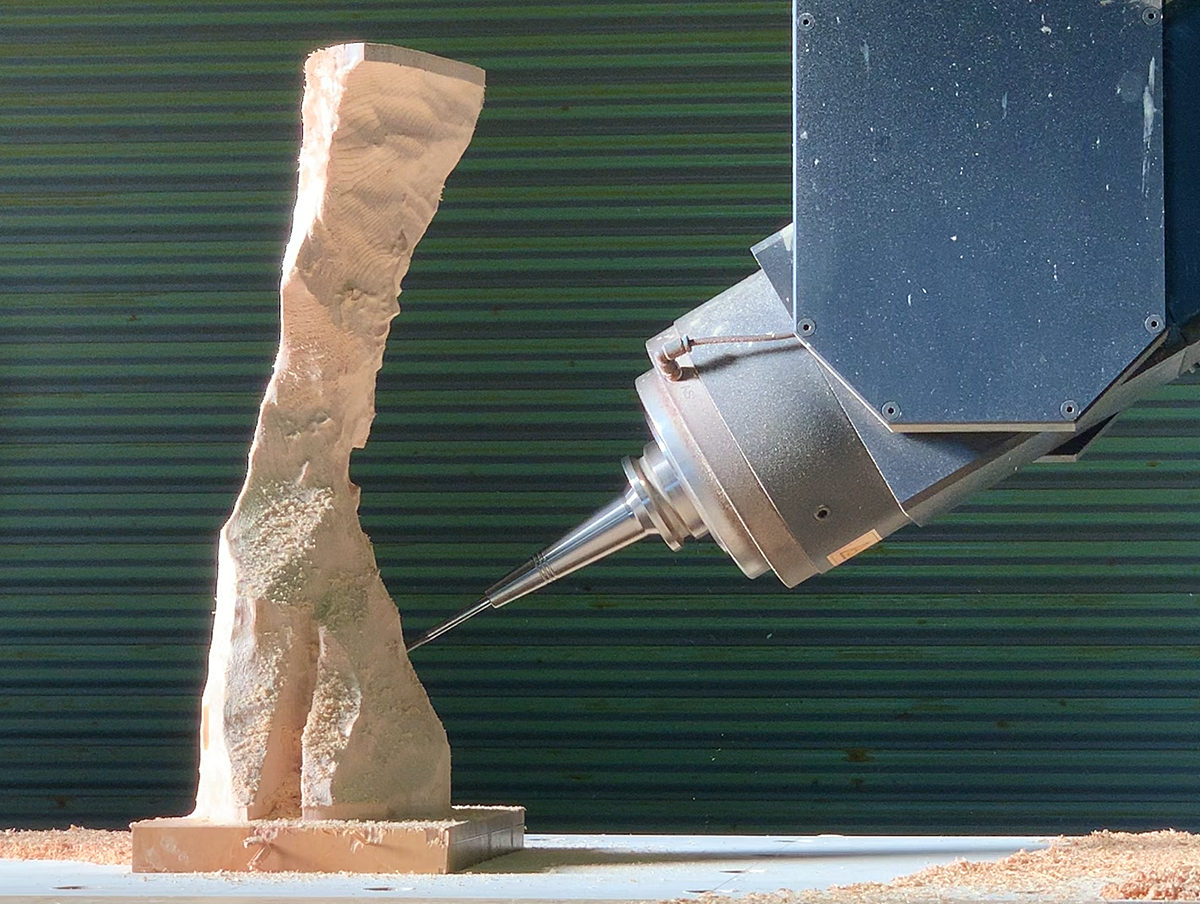 Behind the scenes of the operation of a CNC milling machine. The paths are generated in advance and the machine mills cut along them.
Behind the scenes of the operation of a CNC milling machine. The paths are generated in advance and the machine mills cut along them.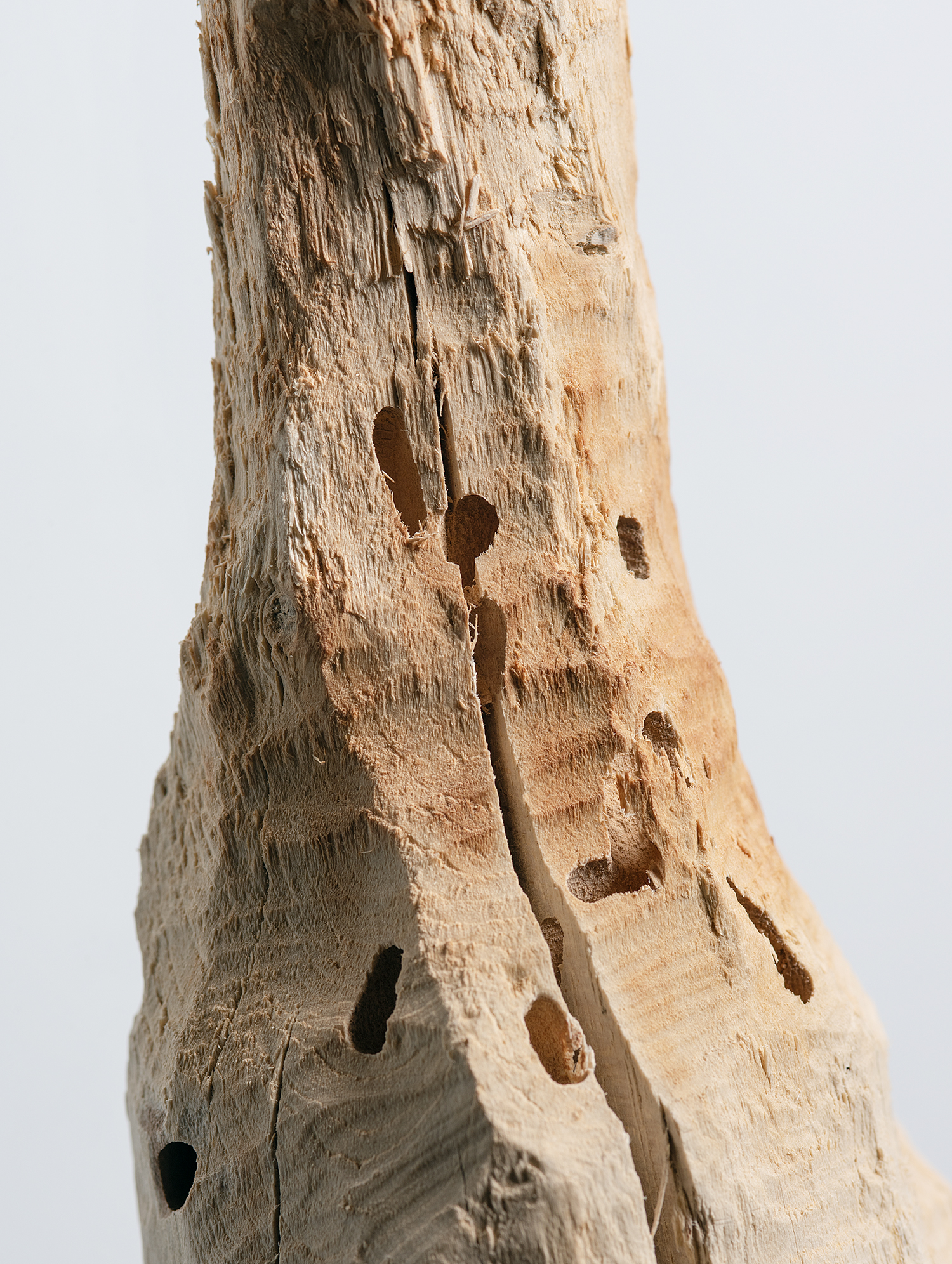 Holes made by longhorn beetles.
Holes made by longhorn beetles.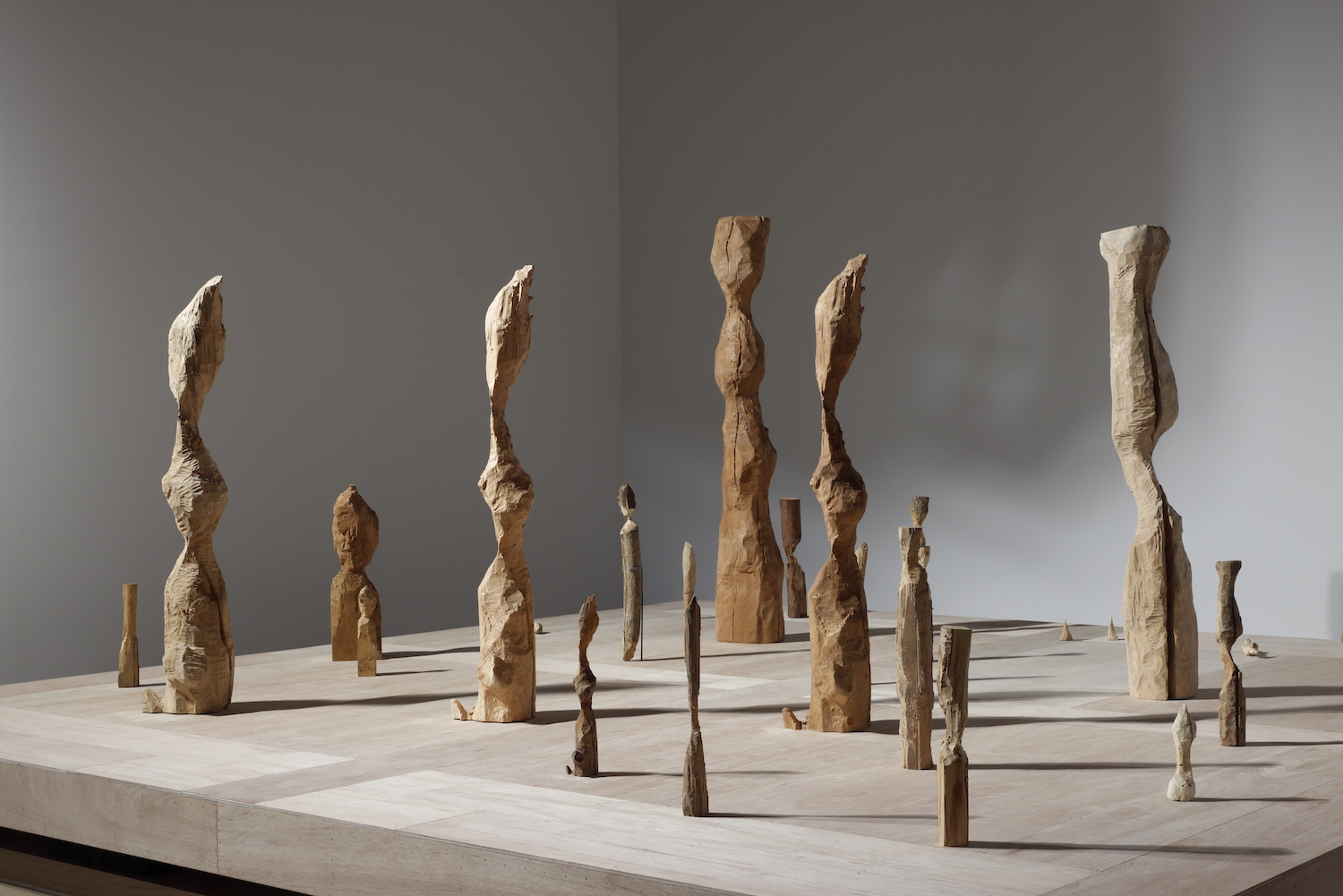 photo: Kioku Keizo, courtesy of Mori Art Museum
photo: Kioku Keizo, courtesy of Mori Art Museum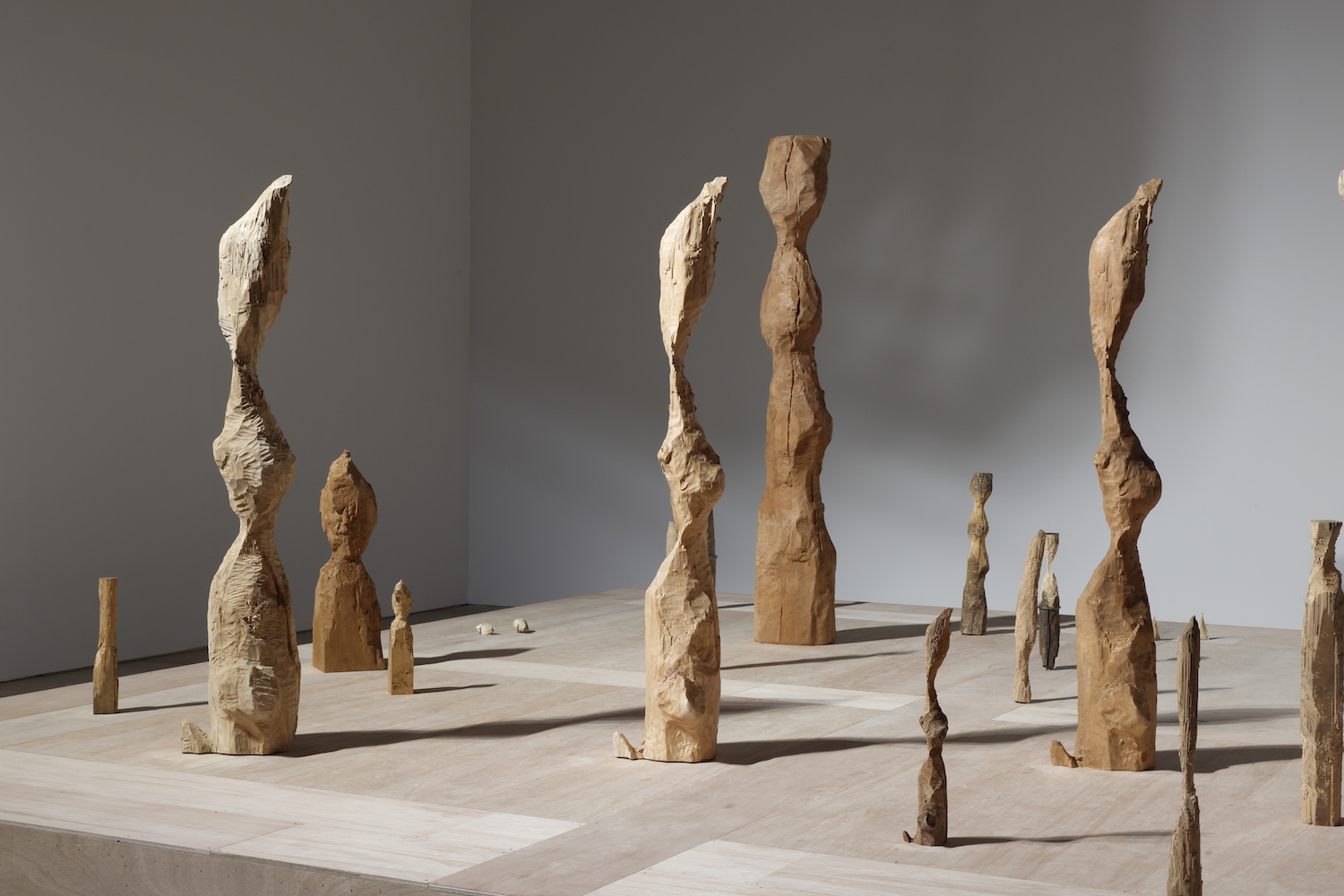 photo: Kioku Keizo, courtesy of Mori Art Museum
photo: Kioku Keizo, courtesy of Mori Art Museum


